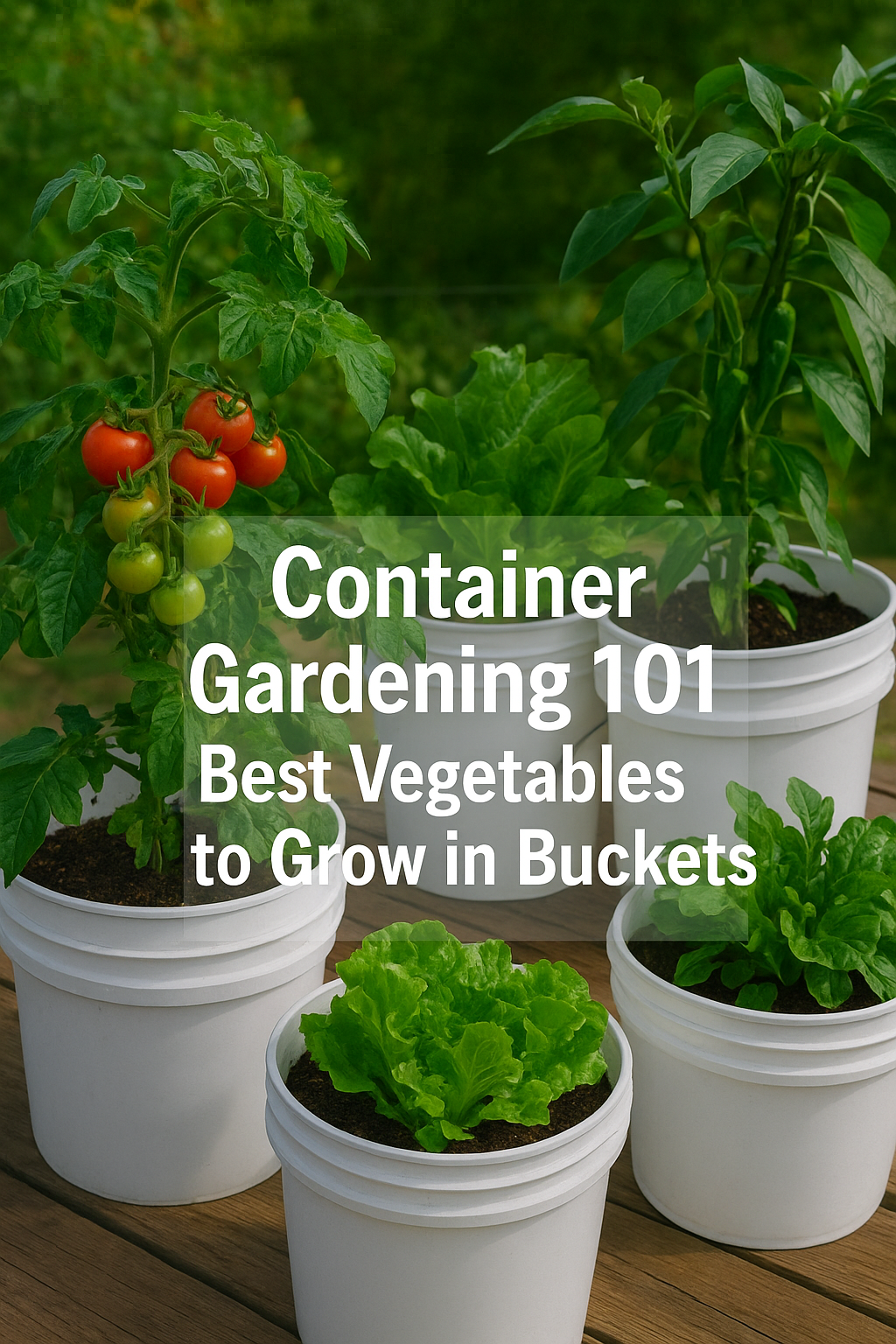Container gardening isn’t just a trend—it’s becoming a practical lifestyle shift for thousands of Americans. With shrinking yard spaces, rising grocery prices, and a growing interest in homegrown food, bucket gardening offers an easy, affordable, and satisfying way to grow your own produce—even if you live in a small apartment.
If you’re just starting out, you don’t need fancy raised beds or a sprawling backyard. All you need is a 5-gallon bucket, a few basic tools, sunlight, and a bit of patience. In fact, this method has been used successfully by gardeners in cities like New York, Chicago, and Los Angeles where outdoor space is limited but creativity isn’t.
Why Buckets Are Ideal for Beginners
Before we jump into what to grow, let’s talk about why buckets work so well for home gardening:
- Cost-Effective: Most 5-gallon buckets cost $3–$5 (or free if you reuse food-grade buckets).
- Portable: Unlike ground beds, you can move them to chase the sun or protect from bad weather.
- Control: You manage everything—from soil mix to watering frequency.
- Compact: Great for balconies, patios, porches, or even sunny windows.
Pro Tip: Always drill 5–6 holes in the bottom for drainage. Without proper drainage, even the best soil can rot your plants.
Best Vegetables to Grow in Buckets (With Real Tips)
After years of trial and error, many container gardeners have narrowed down which veggies truly thrive in buckets. Here’s a refined list, with real examples from U.S. growers and proven results.
1. Leafy Greens (Spinach, Kale, Lettuce)
- Ideal Bucket Size: 2–3 gallons
- Why It Works: These veggies have shallow roots and don’t need deep containers.
- Tips:
- Use a shade cloth in summer to prevent bolting.
- Harvest outer leaves first to keep the plant growing.
- Success Story: Chicago-based blogger Amy Lane grows butter lettuce in repurposed paint buckets year-round.
2. Tomatoes (Cherry or Roma)
- Bucket Size: 5 gallons minimum
- Tips:
- Use deep buckets with cage support or a strong stake.
- Water daily in peak summer, but avoid soggy soil.
- Add calcium (crushed eggshells) to avoid blossom-end rot.
- Real Note: Balcony growers in Austin, Texas, report best results with cherry tomatoes like ‘Sweet 100’ due to smaller fruit size.
3. Peppers (Bell, Jalapeño, Cayenne)
- Bucket Size: 3–5 gallons
- Why It Works: Compact and sun-loving.
- Tips:
- Keep in full sun (6+ hours).
- Rotate buckets weekly to ensure even ripening.
- What to Expect: You’ll get 10–15 peppers per plant in peak season.
4. Carrots (Short Varieties)
- Bucket Size: At least 12″ deep
- Key Advice:
- Choose varieties like ‘Thumbelina’, ‘Parisian’, or ‘Nantes’.
- Use sifted, loose potting mix—no rocks or clay.
- Common Mistake: Crowding seedlings leads to stunted, forked carrots.
5. Cucumbers (Bush Type)
- Bucket Size: 5 gallons
- Support Needed: Small trellis or bamboo stake.
- Tips:
- Feed every 2 weeks with a balanced fertilizer.
- Water deeply every 2 days.
- Best Varieties: ‘Bush Pickle’ and ‘Spacemaster’ are made for pots.
6. Beans (Green or Bush Beans)
- Bucket Size: 5 gallons
- Care Notes:
- Start from seed, not transplant.
- Provide simple support sticks.
- Growth Tip: Plant 6–8 seeds per bucket for a good yield.
7. Swiss Chard or Collard Greens
- Perfect for Beginners.
- They tolerate heat, cold, and even a bit of neglect.
- Harvest outer stalks continuously for fresh cooking greens.
Where to Place Your Buckets
Your placement decisions can make or break your harvest.
- Full Sun Vegetables (like tomatoes, peppers, beans): Place in south or west-facing balconies or rooftops.
- Partial Shade Veggies (lettuce, spinach): Place on east-facing windows or patios.
- Move as Needed: Portable means you can chase the sun in changing seasons.
Don’t have outdoor space? You can grow leafy greens indoors near a south-facing window or under LED grow lights for 4–6 hours a day.
Soil & Fertilizer Secrets
Use a lightweight potting mix—never garden soil alone. Add:
- Compost (30%) for nutrients
- Perlite or coco coir for aeration
- Worm castings or slow-release organic fertilizer
Feed your plants every 2–3 weeks with a liquid seaweed or compost tea. Tomatoes and cucumbers are heavy feeders—don’t skip feeding.
Watering Done Right
- Buckets dry fast, especially in summer.
- Water daily or even twice on very hot days.
- Stick your finger 2″ deep—if dry, it’s time to water.
Avoid overwatering—use drainage trays but don’t let water sit.
Final Thoughts
Bucket gardening isn’t a gimmick. It’s a tested, reliable way to eat fresh food straight from your balcony or patio—without the need for land or massive investment.
Whether you’re growing cherry tomatoes in a New York apartment or hot peppers in a Texas trailer home, the principles remain the same: right plant, right pot, right care.
Leave a Comment:
Have you tried growing veggies in buckets? Share your favorite plant (or mistake) below—let’s grow together!

